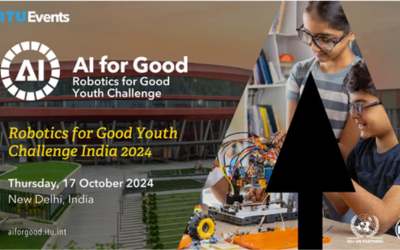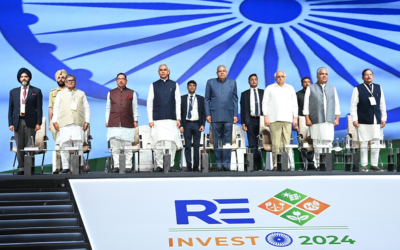Table of Contents
ToggleITU-UN Workshop Highlights Tech’s Role in Disaster Risk Reduction
The ITU-UN Disaster Risk Reduction workshop, themed “Reimagining Disaster Risk Reduction: The Role of Standardization and Innovative Technologies,” was held yesterday as a side event at the ITU-WTSA 2024 in New Delhi.
Co-organized by UNCCD, CDRI, UNDRR, and ITU, the workshop brought together experts from various fields to discuss how advanced technologies can enhance disaster management. The event emphasized the need for deeper cross-sector collaboration to leverage emerging technologies and standardized approaches in addressing critical disaster-related challenges.
Dr. Neeraj Mittal, Secretary of the Department of Telecommunications, delivered the opening remarks. He noted, “Today, technology is converging rapidly in terms of capabilities, platforms, and devices. The day is not far when a single technology might be able to do everything, which is a trend I foresee.”
On disaster mitigation, he stated, “Telecom is a horizontal technology on which all other technologies depend heavily. Therefore, this is the right moment to discuss these issues.” Dr. Mittal also highlighted India’s development of early warning systems, such as the cell broadcast technology by C-DoT, which is only the second of its kind globally. He concluded by urging the use of all available technologies to reduce the risks posed by disasters to humanity.
The workshop showcased the transformative potential of emerging technologies such as artificial intelligence (AI), big data, digital twins, drones, remote sensing, and blockchain in mitigating the impact of disasters. Participants discussed how these technologies can improve prediction accuracy, optimize response times, and streamline recovery efforts. Central to the discussions was the role of standardization in integrating these innovations to enhance global resilience against disasters.
Tomas Lamanauskas, Deputy Secretary-General of ITU, remarked, “Disasters are unfortunately increasing in both frequency and intensity. Both traditional and advanced/emerging technologies like satellites and AI can surely help, but they are also vulnerable. ITU, as an organization, has many activities in this regard. It is monitoring from space and providing an emergency telecommunications cluster to ensure communications are operational when natural calamities strike.”
Now this sounds fascinating !
— DoT India (@DoT_India) October 17, 2024
🎧Applying Mobile Technologies for Hearing… 🎶
The ITU-WHO safe listening workshop highlighted the importance of standards in listening tech. It emphasized the roles of manufacturers and app developers in maintaining optimal sound levels. pic.twitter.com/5gmHuyN644
The workshop concluded with a call for deeper cross-sector collaboration to harness the power of emerging technologies and standardized approaches. By fostering cooperation between industries, governments, and international organizations, participants emphasized the importance of ensuring that communities worldwide are better prepared and more resilient to natural disasters.
The ITU-UNDRR workshop drew a broad range of key stakeholders, including policymakers, disaster management experts, and representatives from global organizations, all committed to advancing the use of technology and standardization in building disaster resilience.
The International Telecommunication Union (ITU-UN) is a specialized agency of the United Nations responsible for issues related to information and communication technologies. ITU plays a critical role in disaster risk reduction by developing standards for telecommunications and ensuring that communication networks remain operational during emergencies. ITU’s initiatives include the development of early warning systems, emergency telecommunications clusters, and satellite monitoring to provide real-time data during disasters.
The United Nations Office for Disaster Risk Reduction (UNDRR) leads global efforts to reduce disaster risk and build resilient communities. UNDRR works with governments, international organizations, and other stakeholders to implement the Sendai Framework for Disaster Risk Reduction, which aims to substantially reduce disaster risk and losses in lives, livelihoods, and health. By promoting the integration of innovative technologies and standardized approaches, UNDRR helps enhance global preparedness and response to disasters.
Together, ITU and UNDRR (ITU-UN) collaborate on various projects and initiatives to leverage technology and standardization in disaster risk reduction. Their joint efforts aim to create a more resilient world by improving disaster prediction, response, and recovery through the use of cutting-edge technologies and international standards.


